ABSTRACT
Japan seems to be doing successfully in terms of intellectual property (IP) protection and commercialization of innovation in the field of IT, electronics, machinery and chemistry, but not so successful in the field of agriculture, forestry and fisheries. Therefore, over the last 10 years, the Ministry of Agriculture, Forestry and Fisheries of Japan (MAFF) has moved ahead on a policy “MAFF Intellectual Property Strategy 2020” in order to promote strategic intellectual property management in the field of agriculture, forestry and fisheries. In recent years, the above mentioned policy has achieved some positive results. Case Study of "Oyster's Patent Battle in Japan" is mentioned in this paper as one of such positive results in the field of fisheries.
Keywords: IP strategy, regional brand strategy, fisheries, oysters, steam under low temperature and pressure, norovirus free, prime minister’s prize, patent infringement case
INTRODUCTION
The government of Japan will push forward to achieve early entry into force of the TPP and expand its member countries/regions, and strategically and expeditiously promote negotiations on other economic partnerships, including the Japan-EU EPA, Regional Comprehensive Economic Partnership (RCEP), and Japan-China-Republic of Korea FTA.
In these circumstances, the Ministry of Agriculture, Forestry and Fisheries of Japan (MAFF) has moved ahead on a policy “MAFF Intellectual Property Strategy 2020” in order to promote strategic intellectual property management in the field of agriculture, forestry and fisheries, and lead to push forward to achieve early entry into force of the TPP and other partnerships.
Over the last 10 years, MAFF has implemented a policy mixture on the basis of MAFF Intellectual Property Strategy 2020, together with Ministry of Economy, Trade and Industry of Japan (METI), Ministry of Health, Labor and Welfare (MHLW) and other official organizations. This policy mixture includes (1) Cool Japan Strategy, (2) Geographical Indication, (3) Foods with Function Claims, (4) Use Invention for Foods, and (5) Improvement of IP Enforcement.
Today, the above mentioned policy mixture of government of Japan has achieved some positive results, especially in the field of fisheries. Among such positive results, famous patent litigation case "Oyster's Patent Battle in Japan" is mentioned in this paper as one of such successful product and brand development case in the field of fisheries.
IP POLICY OF GOVERNMENT OF JAPAN
MAFF Intellectual Property Strategy 2020
In the agriculture, forestry and fisheries fields which are especially important in provincial areas and remote islands, it is necessary to respond promptly and accurately to increasingly sophisticated counterfeits and outflows of technologies. Furthermore, it is also necessary to enhance brand values of products in the agriculture, forestry and fisheries field, and lead to the enhancement of international competitiveness and the activation of local economy. Considering these changes, MAFF Intellectual Property Strategy 2020, which was formulated in May 2015, promotes the building of strategic intellectual property management in the agriculture, forestry and fisheries field including the promotion of measures against outflows of technology and brand management.
Cool Japan Strategy
At just about the same time, the Government of Japan launched Cool Japan Strategy Public-Private Collaboration Initiative in June 2015. Cool Japan refers to the aspects of Japanese culture that non-Japanese perceive as cool. The target of Cool Japan encompasses everything from games, manga, anime, and other forms of content, fashion, commercial products, Japanese cuisine, and traditional culture to robots, eco-friendly technologies, and other high-tech industrial products.
In this 2015 initiative, in order to promote branding in the cuisine, for example, the Government of Japan aims to implement the following policies.
- Use of local cuisine and agricultural, mountain and fishing villages as tourism resources
Promote initiatives that tie together the demand for attractions of agriculture, mountain and fishing villages and tourism, by, for example, pairing attractive regional cuisine and agriculture as local cuisine and picturesque rural scenery and using these as tourism resources.
- Japanese restaurant recommendations
Create a framework for non-government organizations to recommend Japanese restaurants overseas, as support for Japan’s food culture, that actively try to adopt Japanese ingredients and Japanese alcoholic beverages.
- Certification of made-in-Japan food products
To ensure the quality of made-in-Japan food products is conveyed properly, examine a certification system for made-in-Japan food products and distinguish Japanese specialties and Japanese products created with traditional and non-traditional methods.
On the basis of this, the Cool Japan Strategy of MAFF makes the Japanese seafood as appealing and attractive in its website as follows.
Example 1: Seafood
Japan’s climate and seasons give us a wide variety of delicious fish. Japan is surrounded by the sea, and the custom of eating fish dates back over 3000 years. Its north-south oriented landmass and its intricate coastline have produced a variety of fishes in each region. The rivers that flow through its abundant forests to the sea carry rich nutrients and have nurtured diverse marine products. Fish in season are particularly tasty. For example, spring red sea bream, autumn Pacific saury and winter yellowtail are highly prized in Japanese cuisine.
Riding the sea currents, fish have sustained the nation’s health. Warm and cold currents flow around the Japanese archipelago and run into each other along its coast. These locations produce large volumes of plankton, which make them rich fishing grounds by gathering migratory fishes. The fishes that migrate in these grounds mainly consist of Pacific saury, mackerel, jack mackerel and sardines. These fish species are frequently eaten in Japan, and research has revealed that the nutrients contained in these fishes contribute to the long life and good health enjoyed by the Japanese people.
Careful handling techniques allow us to enjoy goodness fresh from the sea. Japan uses various innovative methods to transport fresh fish. For example, in some cases, coastal catch is carried to the ports alive in the fishing net under water. Other techniques include keeping the fises alive in a tank and having them move around without being fed, which firms the flesh before processing. Japanese people constantly pursue ways of preparing fish that make it fresher and more delicious to eat.
Example 2: Sashimi
Sashimi is thinly sliced, raw food. It is one of the most famous dishes in the Japanese cuisine. Seafood is most commonly eaten as sashimi, but other types of meats (such as beef and horse) and foods (such as yuba tofu skin and konnyaku) can also be served as sashimi. Some people confuse sashimi with sushi. Unlike sashimi, sushi includes vinegared rice.
The slices of raw food are often presented arranged on top of a bed of shredded daikon and garnished with shiso leaves. At some restaurants, the rest of the fish is sometimes presented alongside the sashimi as decoration.
Example 3: Sushi
Sushi is the most famous Japanese dish outside of Japan, and one of the most popular dishes among the Japanese. In Japan, sushi is usually enjoyed on special occasions, such as during celebration. During the Edo period, "sushi" is referred to pickled fish preserved in vinegar. Nowadays, sushi can be defined as a dish containing rice which has been prepared with sushi vinegar. There are many different types of sushi. Some popular ones are:
Nigiri
Small rice balls with fish, shellfish, etc. on top. There are countless varieties of nigirizushi, some of the most common ones being tuna, shrimp, eel, squid, octopus and fried egg.
Gunkan
Small cups made of sushi rice and dried seaweed filled with seafood, etc. There are countless varieties of gunkanzushi, some of the most common ones being sea urchin and various kinds of fish eggs.
Norimaki
Sushi rice and seafood, etc. rolled in dried seaweed sheets. There are countless varieties of sushi rolls differing in ingredients and thickness. Sushi rolls prepared "inside out" are very popular outside of Japan, but rarely found in Japan.
Chirashi
Chirashizushi is a dish in which seafood, mushroom and vegetables are spread over sushi rice. It can resemble domburi with the difference being that chirashizushi uses sushi rice while domburi uses regular, unseasoned rice.
Example 4: Tempura
Tempura consists of seafood, vegetables, mushrooms, or meat coated with butter and deep fried. The resulting food has a light, but crispy texture, that may be seasoned with salt or dipped in a light sauce before eating. Tempura was introduced to Japan by the Portuguese in the 16th century, and has developed over the centuries into a popular Japanese dish both inside and outside of Japan.
Example 5: Kaki no dote nabe(Hiroshima)
Hiroshima is Japan's top oyster producer, a tradition that dates back around 450 years. A popular way to serve them in winter is as a nourishing hot pot. A thin layer of miso is spread around the inside of the casserole. The oysters are cooked with tofu and vegetables, and when they're ready the flavor of the broth is adjusted by stirring in the miso to taste.
Geographical indication
In June 2015, the Act on Protection of the Names of Specific Agricultural, Forestry and Fishery Products and Foodstuffs (Geographical Indication (GI) Act) entered into force. In Japan, there are many regional brand products which have obtained high quality and reputation as a result of unique production methods and natural characteristics such as regional climate and soil conditions. GI Act provides a system that the government protects names of such products as Intellectual Property.
GIs are indications which identify a good as originating in the territory of a member, or a region or locality in that territory, where a given quality, reputation or other characteristic of the good is essentially attributable to its geographical origin. [TRIPS Agreement Art.22.1]
Example :
@@ XXXX
Region name of products
The GI protection system is different from the Regional Collective Trademark System as follows:
- It is necessary for the applicant to define a rule related to the quality control of the products.
- The applicant has to check the quality of the products on the basis of the rule.
- MAFF may issue an injunction to correct the unlawful use of GIs by producers/processors.
GI Act protects the interests of producers through establishment of the GI protection system, thereby contributing to the sound development of the agricultural, forestry and fishery industries as well as to ensure the interests of consumers.
Foods with function claims
Meanwhile, at just about the same time, the system of "Foods with Function Claims" has been launched in April 2015, in order to build up Health Care Food Industry in Japan. Before this system was in place, making function claims on food labels had only been allowed for government-approved Foods for Specified Health Uses (FOSHU) and for Foods with Nutrient Function Claims (FNFC) that comply with the specifications and standards designated by the government. These systems remain in place. In addition to these categories, this new type of Foods with Health Claims, called Foods with Function Claims, was introduced in April 2015 in order to make more products available clearly labeled with certain nutritional or health functions and to enable consumers to make more informed choices.
Characteristics of the new system "Foods with Function Claims" are as follows:
- Food business operators can make function claims on food labels when they submit to the Secretary-General of the Consumer Affairs Agency necessary information including scientific evidence on food safety and effectiveness in accordance to the rules prescribed by the law before marketing the product.
- All food products including fresh produce are subject to this system.
- Unlike FOSHU, the government does not evaluate the safety and effectiveness of Foods with Function Claims. Food business operators make appropriate function claims based on scientific evidence for which they are responsible. The scientific evidence for function claims must be obtained from clinical trials or systematic literature reviews.
- To make function claims under the new system, it is required to submit a premarket notification and to label the package in accordance with the Food Labelling Standards pursuant to the Food Labelling Act as well as the "Guidelines on Notification of Foods with Function Claims."
Use invention for foods
A year ago from then, JPO revised the Examination Guidelines for Patent and Utility Model related to the Use Invention for Foods in April 2016, in order to harmonize the Examination Practice of JPO with the system of "Foods with Function Claims". Overview of the revision of Examination Guidelines for Patent and Utility Model in Japan related to the Use Invention for Foods is as follows:
- If there is limitation of use in a claimed invention of foods, the examiner recognizes the limitation and specifies it in the claimed invention.
- However, in cases where the invention are animals or plants, even if there is the limitation of use in a claimed invention, the examiner interprets such animals and plants as the animals and plants themselves without limitation of use because such a limitation of use only indicates the utility of animals and plants.
Example :
[Claim 1] A food composition for use in preventing a hangover containing an ingredient A as an active ingredient. - - - allowable after revision 2016
[Claim 2] A food composition for use in preventing a hangover according to claim 1, wherein the food composition is a fermented milk product. - - - allowable after revision 2016
[Claim 3] A food composition for use in preventing a hangover according to claim 2, wherein the fermented milk product is yogurt. - - - allowable after revision 2016
Explanation:
The claimed invention “A food composition for use in preventing a hangover containing an ingredient A as an active ingredient” and the cited invention “a food composition containing an ingredient A” are not different except a limitation of use application.
In this case, the examiner specifies the claimed invention in consideration of the limitation of use application such as “for use in preventing a hangover” provided that both of the following conditions (i) and (ii) are satisfied.
(i) “The use in preventing a hangover” is derived from discovering of an unknown attribute that promotes alcohol metabolism by an ingredient A.
(ii) The use application which is derived from the attribute is different from any known uses and novel.
The same way of specifying the claimed invention also applies to a fermented milk product and yogurt which are more specific concept of a food composition.
Improvement of IP enforcement
Pro-patent policy is the basic idea of intellectual property policy in Japan. The government of Japan aims to construct a new intellectual property system for promoting innovation corresponding to globalization and upgrading of technology.
Especially, through bilateral and multilateral agreements, including Free Trade Agreements (FTAs) and Economic Partnership Agreement (EPAs), the Government of Japan aims to strengthen protection of intellectual property and countermeasures against counterfeiting and piracy, and strive for the preparation and improvement of the intellectual property system and ensuring effective law enforcement.
On the basis of the above mentioned Pro-patent policy, the Government of Japan has revised the Japanese patent enforcement system numerous times in the last fifteen years. For example, the following revision has been implemented in order to strengthen the protection of Intellectual property in Japan.
- Prompt and precise examination and appeal/trial of patent applications
- Establishment of IP High Court
- Reinforcement of measures against counterfeits and pirated copies
- Promotion of cooperation and international harmonization of the Intellectual Property system
- Reinforcement of trade secret protection
- Protection of Intellectual Property in new areas (Software and Biotech)
Among them, the most epoch-making improvement was the establishment of IP High Court and granting to the Tokyo and Osaka District Courts exclusive jurisdiction over lawsuits related to intellectual property rights including patent rights. At the same time, the evidence collection process and the damage award calculation methods were fundamentally revised in order to strengthen the position of patentees. In the result, newly established IP court system has promoted speedy IP dispute resolution by improving support from technical experts, establishing a coherent approach to the cases and centralizing the jurisdiction of IP disputes. Now, the proceedings of patent litigation in Japan may be the fastest in the world.
OYSTER'S PATENT BATTLE IN JAPAN
In these years, the above mentioned policy mixture of government of Japan has achieved some positive results, especially in the field of fisheries. Among such positive results, famous patent litigation case "Oyster's Patent Battle in Japan" is mentioned in this paper as one of such successful product and brand development case in the field of fisheries.
The main character of this story is “Maruto Suisan” located in Hiroshima. Hiroshima is Japan's top oyster producer, a tradition that dates back around 450 years.
Milk of "Milk of sea"
Do you know an expression, "A forest raises oysters”? Forest and Living thing of the sea. Though you might wonder about the relationship between the both which are far apart, the key to resolve this puzzle is in oyster's bait. It is phytoplankton in the sea. This minute organic life supporting the base of the feeding chain of the sea will never increase without the clean and nutritious water of rivers running through the forest humus. Chigusa-gawa river and Ibo-gawa river flow in there. Chigusa-gawa is famous for the good water selected as one of the best 100 spring water. Ibo-gawa is also famous for Soumen (Japanese vermicelli).
The Hyonosan-Ushiroyama-Nagisan quasi-national park is up the river. This quasi-national park which has the sixth area in the whole country is called "Mother Earth", whose virgin forest of broadleaf trees such as beeches, Japanese oaks, horse chestnuts and cornels that make the origin of hums has magnificently extended there. Thanks to the good current and the geographical features, the water soaked in the blessing of mother Earth hardly flows out in the ocean. Therefore, Ichinen-Tamakaki can grow up enough to be shipped in one year in the Harima-nada open sea where bait is abundant, while it takes two or three years in the other breeding districts. Untouched sea, river, and forest. Ichinen-Tamakaki (R) is born only after three favorable conditions become complete.
Ichinen-Tamakaki oyster from Harima-nada open sea (R)
In general, it tends to seem that oysters let out its juice and become hard and small when are used for pot dish. However, the oysters in the Harima-nada open sea won't shrink much and the big meat won't become hard and keep an elastic feeling.
Steamed oyster
Maruto Suisan has started to process Ichinen-Tamakaki (R) with the latest steamer, and froze them up rapidly since 2011 (and has filed a patent application in 2010). Steaming makes the oysters much softer and more delicious. They have attracted attention as health food is abundant in minerals and nutrition. Maruto Suisan steams Ichinen-Tamakaki harvested on Maehama keeping them fresh and puffy and then freeze them up.
Characteristics
By steaming and freezing, Maruto Suisan can provide delicious and nutritious oysters even in summer.
● Heated and safe.
Big oysters that cannot rose in any other breeding districts.
Processed in February and March when glycogen is contained the most.
● The process of steaming keeps the extract and the taste inside.
The home (Harima-nada open sea) has been limited, and the flavor is uniform.
● The usage is as follows.
Slices of raw fish.
Sushi
Pot dish
Tempura
Deep-flied food
Barbecue etc.
Prime Minister's prize
Maruto Suisan was awarded the Prime Minister's Prize at the Festival of Agriculture, Forestry and Fisheries of Japan in 2014, and has become recognized as a manufacturer of high-quality Steamed Oyster (Tama-Seiro (R)).
Litigation of Infringement of Patent
Just after Maruto Suisan was awarded the Prime Minister Prize in 2014, “Kunihiro” started to sell steamed oysters. Kunihiro is a company doing business around “oysters” located in Hiroshima. In a short while, Maruto Suisan found out that its patent was infringed by Kunihiro. Shortly, Maruto Suisan sent a letter of warning to Kunihiro, but Kunihiro did not stop selling its steamed oysters.
Therefore, Maruto Suisan launched a legal action at Osaka District Court in Japan, in order to be granted an interim injunction against the sales of steamed oysters of Kunihiro. Half a year later, Osaka District Court issued an interim injunction to Kunihiro. Further half a year later, Maruto Suisan reached reconciliation with Kunihiro, because Kunihiro stopped sales of its steamed oysters and discarded all the stock of its steamed oysters.
In consequence, the Steamed Oyster (Tama-Seiro (R)) of Maruto Suisan keeps almost 100% of the market share of steamed oysters in Japan. The Steamed Oyster (Tama-Seiro (R)) brings Maruto Suisan excellent earnings every year. Maruto Suisan is putting more effort into research and development in order to create some breakthrough products using oysters, and into filing a number of patent applications in order to protect such breakthrough products.
CONCLUSION
Over the last 10 years, the Government of Japan has implemented a policy mixture on the basis of MAFF Intellectual Property Strategy 2020, together with Ministry of Economy, Trade and Industry of Japan (METI), Ministry of Health, Labour and Welfare (MHLW) and other official organizations.
This policy mixture includes (1) Cool Japan Strategy, (2) Geographical Indication, (3) Foods with Function Claims, (4) Use Invention for Foods, and (5) Improvement of IP Enforcement.
This policy mixture of the Government of Japan carried out the mission successfully, because the above mentioned policy mixture has achieved some positive results, especially in the field of fisheries (for example, famous patent litigation case "Oyster's Patent Battle in Japan").
REFERENCES
Intellectual Property Strategy Headquarters (Government of Japan), June 2015, “Intellectual Property Strategy Program 2015”
Cool Japan Strategy Promotion Council (Government of Japan), June 17, 2015, “Cool Japan Strategy Public-Private Collaboration Initiative”
Ministry of Agriculture, Forestry and Fisheries (Government of Japan), 2007, “OISHII JAPAN” http://www.maff.go.jp/e/oishii/index.html
Ministry of Agriculture, Forestry and Fisheries (Government of Japan), 2007, “Seafood” http://www.maff.go.jp/e/oishii/ingredients/seafood.html
Ministry of Agriculture, Forestry and Fisheries (Government of Japan), 2016, “Sashimi”, http://www.maff.go.jp/e/policies/market/food/sashimi.html
Ministry of Agriculture, Forestry and Fisheries (Government of Japan), 2016, “Sushi”, http://www.maff.go.jp/e/policies/market/food/sushi.html
Ministry of Agriculture, Forestry and Fisheries (Government of Japan), 2016, “Tempura”, http://www.maff.go.jp/e/policies/market/food/tempura.html
Ministry of Agriculture, Forestry and Fisheries (Government of Japan), 2007, “Local Dishes in Chugoku Area / Shikoku Area” http://www.maff.go.jp/e/japan_food/food/chugoku_shikoku.html
Ministry of Agriculture, Forestry and Fisheries (Government of Japan), 2016, “Geographical Indication (GI) Protection System in Japan”
Food Labelling Division, Consumer Affairs Agency (Government of Japan), July, 2015, “The system of "Foods with Function Claims" has been launched!”
Japan Patent Office, 2016 March, “Revision of the Examination Guidelines for Patent and Utility Model” https://www.jpo.go.jp/iken_e/back_20160323_guide.htm
Japan Patent Office, 2016 March, “Use Invention of Foods “Part III Chapter 2 Section 4 Claims Including Specific Expressions”
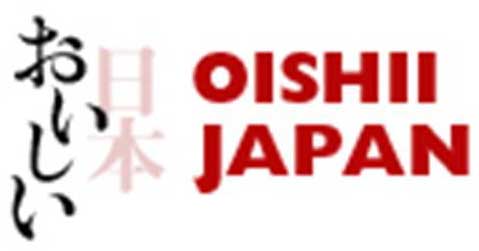
Fig. 1. OISHII JAPAN - Your gateway to Japan's food culture. Japan's appealing and delicious ingredients make simple dishes into a true culinary diligent.

Fig. 2. Seafood - This gift from the sea is prepared in diverse ways to capture freshness.
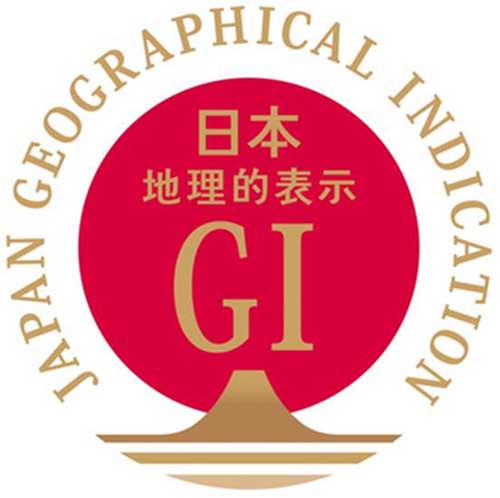
Fig. 3. Registered Symbol “GI Mark” - GI Mark must be affixed with registered GIs. It proves that the product is a genuine one whose established characteristics are essentially attributable to its producing area. The large red disk of the GI Mark symbolizes the rising sun above Mt. Fuji and water surface, and the main color is red and gold: the color of Hinomaru (rising sun) and Japanese formal and traditional color. Such design of the mark clearly shows that the mark is used for genuine Japanese GI products and express “Japanese Style”.
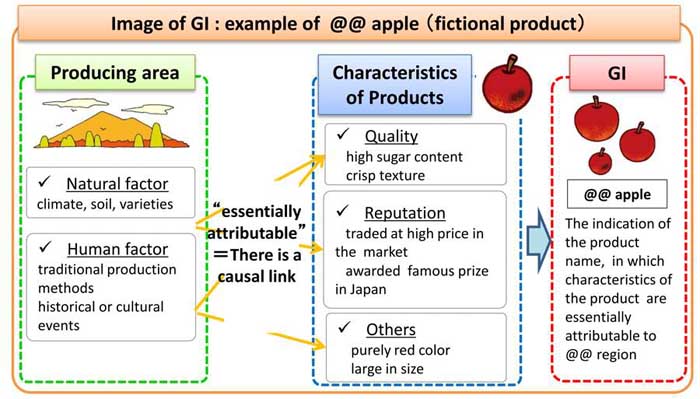
Fig. 4. Image of GI : example of @@ apple (fictional product)
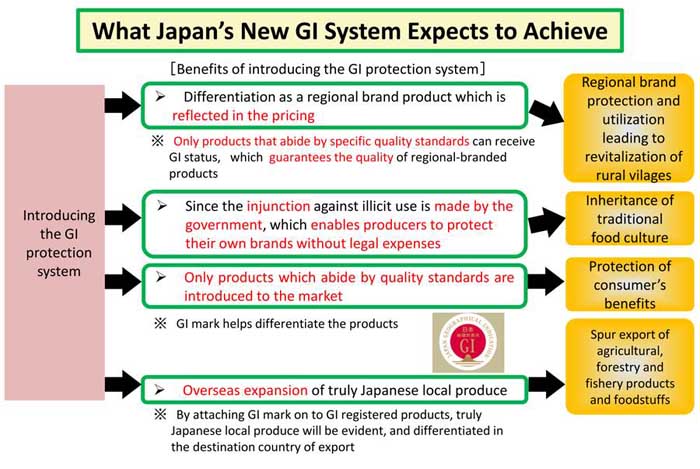
Fig. 5. What Japan’s New GI system expects to achieve
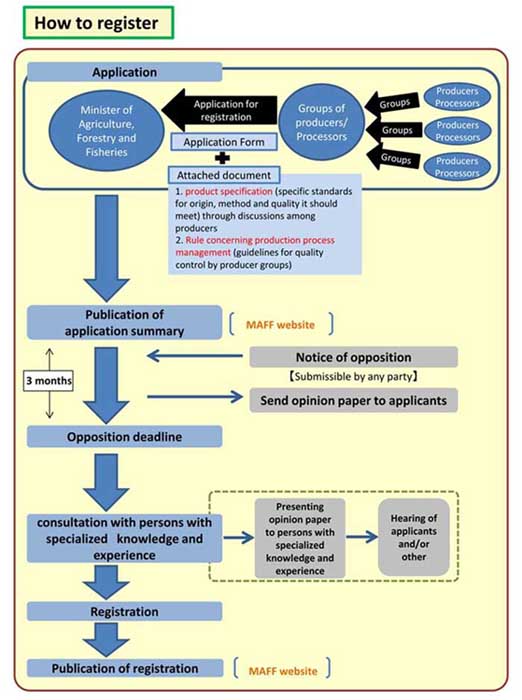
Fig. 6. How to register GI
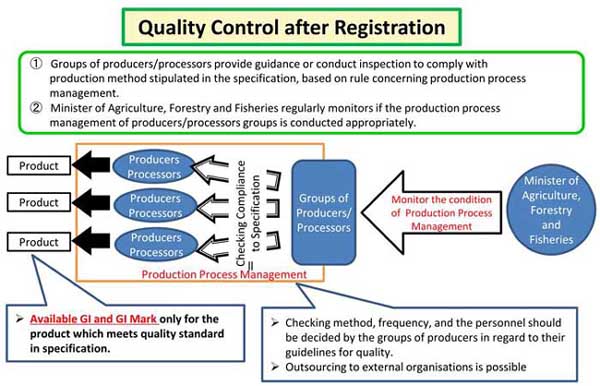
Fig. 7. Quality Control after Registration of GI

Fig. 8. Measures against Illicit Use of GI

Fig. 9. Characteristics of the New System "Foods with Function Claims"
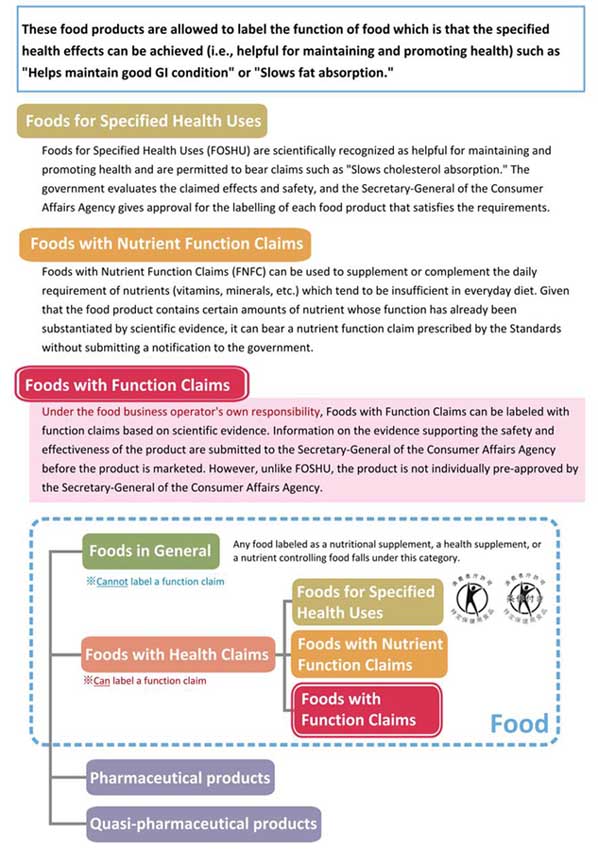
Fig. 10. Foods Labeled with Certain Nutritional or Health Functions
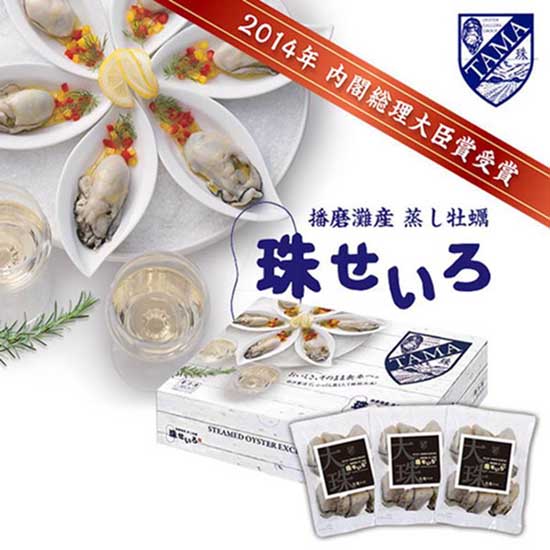
Fig. 11. Steamed Oyster (Tama-Seiro (R)) of Maruto Suisan
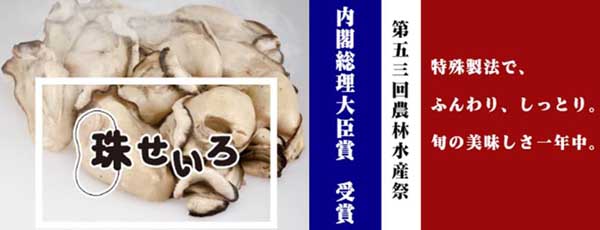
Fig. 12. Steamed Oyster (Tama-Seiro (R)) of Maruto Suisan
.jpg)
| Submitted as a resource paper for the FFTC –MARDI International Workshop on “Effective IP Protection and Commercialization Strategies for Agricultural Innovation”, Oct. 18-20, MARDI Headquaters, Serdang, Selangor, Malaysia |


Strategy for Protecting Intellectual Property Rights (IPRs) Related to Invention and Research Results in Fisheries in Japan
ABSTRACT
Japan seems to be doing successfully in terms of intellectual property (IP) protection and commercialization of innovation in the field of IT, electronics, machinery and chemistry, but not so successful in the field of agriculture, forestry and fisheries. Therefore, over the last 10 years, the Ministry of Agriculture, Forestry and Fisheries of Japan (MAFF) has moved ahead on a policy “MAFF Intellectual Property Strategy 2020” in order to promote strategic intellectual property management in the field of agriculture, forestry and fisheries. In recent years, the above mentioned policy has achieved some positive results. Case Study of "Oyster's Patent Battle in Japan" is mentioned in this paper as one of such positive results in the field of fisheries.
Keywords: IP strategy, regional brand strategy, fisheries, oysters, steam under low temperature and pressure, norovirus free, prime minister’s prize, patent infringement case
INTRODUCTION
The government of Japan will push forward to achieve early entry into force of the TPP and expand its member countries/regions, and strategically and expeditiously promote negotiations on other economic partnerships, including the Japan-EU EPA, Regional Comprehensive Economic Partnership (RCEP), and Japan-China-Republic of Korea FTA.
In these circumstances, the Ministry of Agriculture, Forestry and Fisheries of Japan (MAFF) has moved ahead on a policy “MAFF Intellectual Property Strategy 2020” in order to promote strategic intellectual property management in the field of agriculture, forestry and fisheries, and lead to push forward to achieve early entry into force of the TPP and other partnerships.
Over the last 10 years, MAFF has implemented a policy mixture on the basis of MAFF Intellectual Property Strategy 2020, together with Ministry of Economy, Trade and Industry of Japan (METI), Ministry of Health, Labor and Welfare (MHLW) and other official organizations. This policy mixture includes (1) Cool Japan Strategy, (2) Geographical Indication, (3) Foods with Function Claims, (4) Use Invention for Foods, and (5) Improvement of IP Enforcement.
Today, the above mentioned policy mixture of government of Japan has achieved some positive results, especially in the field of fisheries. Among such positive results, famous patent litigation case "Oyster's Patent Battle in Japan" is mentioned in this paper as one of such successful product and brand development case in the field of fisheries.
IP POLICY OF GOVERNMENT OF JAPAN
MAFF Intellectual Property Strategy 2020
In the agriculture, forestry and fisheries fields which are especially important in provincial areas and remote islands, it is necessary to respond promptly and accurately to increasingly sophisticated counterfeits and outflows of technologies. Furthermore, it is also necessary to enhance brand values of products in the agriculture, forestry and fisheries field, and lead to the enhancement of international competitiveness and the activation of local economy. Considering these changes, MAFF Intellectual Property Strategy 2020, which was formulated in May 2015, promotes the building of strategic intellectual property management in the agriculture, forestry and fisheries field including the promotion of measures against outflows of technology and brand management.
Cool Japan Strategy
At just about the same time, the Government of Japan launched Cool Japan Strategy Public-Private Collaboration Initiative in June 2015. Cool Japan refers to the aspects of Japanese culture that non-Japanese perceive as cool. The target of Cool Japan encompasses everything from games, manga, anime, and other forms of content, fashion, commercial products, Japanese cuisine, and traditional culture to robots, eco-friendly technologies, and other high-tech industrial products.
In this 2015 initiative, in order to promote branding in the cuisine, for example, the Government of Japan aims to implement the following policies.
Promote initiatives that tie together the demand for attractions of agriculture, mountain and fishing villages and tourism, by, for example, pairing attractive regional cuisine and agriculture as local cuisine and picturesque rural scenery and using these as tourism resources.
Create a framework for non-government organizations to recommend Japanese restaurants overseas, as support for Japan’s food culture, that actively try to adopt Japanese ingredients and Japanese alcoholic beverages.
To ensure the quality of made-in-Japan food products is conveyed properly, examine a certification system for made-in-Japan food products and distinguish Japanese specialties and Japanese products created with traditional and non-traditional methods.
On the basis of this, the Cool Japan Strategy of MAFF makes the Japanese seafood as appealing and attractive in its website as follows.
Example 1: Seafood
Japan’s climate and seasons give us a wide variety of delicious fish. Japan is surrounded by the sea, and the custom of eating fish dates back over 3000 years. Its north-south oriented landmass and its intricate coastline have produced a variety of fishes in each region. The rivers that flow through its abundant forests to the sea carry rich nutrients and have nurtured diverse marine products. Fish in season are particularly tasty. For example, spring red sea bream, autumn Pacific saury and winter yellowtail are highly prized in Japanese cuisine.
Riding the sea currents, fish have sustained the nation’s health. Warm and cold currents flow around the Japanese archipelago and run into each other along its coast. These locations produce large volumes of plankton, which make them rich fishing grounds by gathering migratory fishes. The fishes that migrate in these grounds mainly consist of Pacific saury, mackerel, jack mackerel and sardines. These fish species are frequently eaten in Japan, and research has revealed that the nutrients contained in these fishes contribute to the long life and good health enjoyed by the Japanese people.
Careful handling techniques allow us to enjoy goodness fresh from the sea. Japan uses various innovative methods to transport fresh fish. For example, in some cases, coastal catch is carried to the ports alive in the fishing net under water. Other techniques include keeping the fises alive in a tank and having them move around without being fed, which firms the flesh before processing. Japanese people constantly pursue ways of preparing fish that make it fresher and more delicious to eat.
Example 2: Sashimi
Sashimi is thinly sliced, raw food. It is one of the most famous dishes in the Japanese cuisine. Seafood is most commonly eaten as sashimi, but other types of meats (such as beef and horse) and foods (such as yuba tofu skin and konnyaku) can also be served as sashimi. Some people confuse sashimi with sushi. Unlike sashimi, sushi includes vinegared rice.
The slices of raw food are often presented arranged on top of a bed of shredded daikon and garnished with shiso leaves. At some restaurants, the rest of the fish is sometimes presented alongside the sashimi as decoration.
Example 3: Sushi
Sushi is the most famous Japanese dish outside of Japan, and one of the most popular dishes among the Japanese. In Japan, sushi is usually enjoyed on special occasions, such as during celebration. During the Edo period, "sushi" is referred to pickled fish preserved in vinegar. Nowadays, sushi can be defined as a dish containing rice which has been prepared with sushi vinegar. There are many different types of sushi. Some popular ones are:
Nigiri
Small rice balls with fish, shellfish, etc. on top. There are countless varieties of nigirizushi, some of the most common ones being tuna, shrimp, eel, squid, octopus and fried egg.
Gunkan
Small cups made of sushi rice and dried seaweed filled with seafood, etc. There are countless varieties of gunkanzushi, some of the most common ones being sea urchin and various kinds of fish eggs.
Norimaki
Sushi rice and seafood, etc. rolled in dried seaweed sheets. There are countless varieties of sushi rolls differing in ingredients and thickness. Sushi rolls prepared "inside out" are very popular outside of Japan, but rarely found in Japan.
Chirashi
Chirashizushi is a dish in which seafood, mushroom and vegetables are spread over sushi rice. It can resemble domburi with the difference being that chirashizushi uses sushi rice while domburi uses regular, unseasoned rice.
Example 4: Tempura
Tempura consists of seafood, vegetables, mushrooms, or meat coated with butter and deep fried. The resulting food has a light, but crispy texture, that may be seasoned with salt or dipped in a light sauce before eating. Tempura was introduced to Japan by the Portuguese in the 16th century, and has developed over the centuries into a popular Japanese dish both inside and outside of Japan.
Example 5: Kaki no dote nabe(Hiroshima)
Hiroshima is Japan's top oyster producer, a tradition that dates back around 450 years. A popular way to serve them in winter is as a nourishing hot pot. A thin layer of miso is spread around the inside of the casserole. The oysters are cooked with tofu and vegetables, and when they're ready the flavor of the broth is adjusted by stirring in the miso to taste.
Geographical indication
In June 2015, the Act on Protection of the Names of Specific Agricultural, Forestry and Fishery Products and Foodstuffs (Geographical Indication (GI) Act) entered into force. In Japan, there are many regional brand products which have obtained high quality and reputation as a result of unique production methods and natural characteristics such as regional climate and soil conditions. GI Act provides a system that the government protects names of such products as Intellectual Property.
GIs are indications which identify a good as originating in the territory of a member, or a region or locality in that territory, where a given quality, reputation or other characteristic of the good is essentially attributable to its geographical origin. [TRIPS Agreement Art.22.1]
Example :
@@ XXXX
Region name of products
The GI protection system is different from the Regional Collective Trademark System as follows:
GI Act protects the interests of producers through establishment of the GI protection system, thereby contributing to the sound development of the agricultural, forestry and fishery industries as well as to ensure the interests of consumers.
Foods with function claims
Meanwhile, at just about the same time, the system of "Foods with Function Claims" has been launched in April 2015, in order to build up Health Care Food Industry in Japan. Before this system was in place, making function claims on food labels had only been allowed for government-approved Foods for Specified Health Uses (FOSHU) and for Foods with Nutrient Function Claims (FNFC) that comply with the specifications and standards designated by the government. These systems remain in place. In addition to these categories, this new type of Foods with Health Claims, called Foods with Function Claims, was introduced in April 2015 in order to make more products available clearly labeled with certain nutritional or health functions and to enable consumers to make more informed choices.
Characteristics of the new system "Foods with Function Claims" are as follows:
Use invention for foods
A year ago from then, JPO revised the Examination Guidelines for Patent and Utility Model related to the Use Invention for Foods in April 2016, in order to harmonize the Examination Practice of JPO with the system of "Foods with Function Claims". Overview of the revision of Examination Guidelines for Patent and Utility Model in Japan related to the Use Invention for Foods is as follows:
Example :
[Claim 1] A food composition for use in preventing a hangover containing an ingredient A as an active ingredient. - - - allowable after revision 2016
[Claim 2] A food composition for use in preventing a hangover according to claim 1, wherein the food composition is a fermented milk product. - - - allowable after revision 2016
[Claim 3] A food composition for use in preventing a hangover according to claim 2, wherein the fermented milk product is yogurt. - - - allowable after revision 2016
Explanation:
The claimed invention “A food composition for use in preventing a hangover containing an ingredient A as an active ingredient” and the cited invention “a food composition containing an ingredient A” are not different except a limitation of use application.
In this case, the examiner specifies the claimed invention in consideration of the limitation of use application such as “for use in preventing a hangover” provided that both of the following conditions (i) and (ii) are satisfied.
(i) “The use in preventing a hangover” is derived from discovering of an unknown attribute that promotes alcohol metabolism by an ingredient A.
(ii) The use application which is derived from the attribute is different from any known uses and novel.
The same way of specifying the claimed invention also applies to a fermented milk product and yogurt which are more specific concept of a food composition.
Improvement of IP enforcement
Pro-patent policy is the basic idea of intellectual property policy in Japan. The government of Japan aims to construct a new intellectual property system for promoting innovation corresponding to globalization and upgrading of technology.
Especially, through bilateral and multilateral agreements, including Free Trade Agreements (FTAs) and Economic Partnership Agreement (EPAs), the Government of Japan aims to strengthen protection of intellectual property and countermeasures against counterfeiting and piracy, and strive for the preparation and improvement of the intellectual property system and ensuring effective law enforcement.
On the basis of the above mentioned Pro-patent policy, the Government of Japan has revised the Japanese patent enforcement system numerous times in the last fifteen years. For example, the following revision has been implemented in order to strengthen the protection of Intellectual property in Japan.
Among them, the most epoch-making improvement was the establishment of IP High Court and granting to the Tokyo and Osaka District Courts exclusive jurisdiction over lawsuits related to intellectual property rights including patent rights. At the same time, the evidence collection process and the damage award calculation methods were fundamentally revised in order to strengthen the position of patentees. In the result, newly established IP court system has promoted speedy IP dispute resolution by improving support from technical experts, establishing a coherent approach to the cases and centralizing the jurisdiction of IP disputes. Now, the proceedings of patent litigation in Japan may be the fastest in the world.
OYSTER'S PATENT BATTLE IN JAPAN
In these years, the above mentioned policy mixture of government of Japan has achieved some positive results, especially in the field of fisheries. Among such positive results, famous patent litigation case "Oyster's Patent Battle in Japan" is mentioned in this paper as one of such successful product and brand development case in the field of fisheries.
The main character of this story is “Maruto Suisan” located in Hiroshima. Hiroshima is Japan's top oyster producer, a tradition that dates back around 450 years.
Milk of "Milk of sea"
Do you know an expression, "A forest raises oysters”? Forest and Living thing of the sea. Though you might wonder about the relationship between the both which are far apart, the key to resolve this puzzle is in oyster's bait. It is phytoplankton in the sea. This minute organic life supporting the base of the feeding chain of the sea will never increase without the clean and nutritious water of rivers running through the forest humus. Chigusa-gawa river and Ibo-gawa river flow in there. Chigusa-gawa is famous for the good water selected as one of the best 100 spring water. Ibo-gawa is also famous for Soumen (Japanese vermicelli).
The Hyonosan-Ushiroyama-Nagisan quasi-national park is up the river. This quasi-national park which has the sixth area in the whole country is called "Mother Earth", whose virgin forest of broadleaf trees such as beeches, Japanese oaks, horse chestnuts and cornels that make the origin of hums has magnificently extended there. Thanks to the good current and the geographical features, the water soaked in the blessing of mother Earth hardly flows out in the ocean. Therefore, Ichinen-Tamakaki can grow up enough to be shipped in one year in the Harima-nada open sea where bait is abundant, while it takes two or three years in the other breeding districts. Untouched sea, river, and forest. Ichinen-Tamakaki (R) is born only after three favorable conditions become complete.
Ichinen-Tamakaki oyster from Harima-nada open sea (R)
In general, it tends to seem that oysters let out its juice and become hard and small when are used for pot dish. However, the oysters in the Harima-nada open sea won't shrink much and the big meat won't become hard and keep an elastic feeling.
Steamed oyster
Maruto Suisan has started to process Ichinen-Tamakaki (R) with the latest steamer, and froze them up rapidly since 2011 (and has filed a patent application in 2010). Steaming makes the oysters much softer and more delicious. They have attracted attention as health food is abundant in minerals and nutrition. Maruto Suisan steams Ichinen-Tamakaki harvested on Maehama keeping them fresh and puffy and then freeze them up.
Characteristics
By steaming and freezing, Maruto Suisan can provide delicious and nutritious oysters even in summer.
● Heated and safe.
Big oysters that cannot rose in any other breeding districts.
Processed in February and March when glycogen is contained the most.
● The process of steaming keeps the extract and the taste inside.
The home (Harima-nada open sea) has been limited, and the flavor is uniform.
● The usage is as follows.
Slices of raw fish.
Sushi
Pot dish
Tempura
Deep-flied food
Barbecue etc.
Prime Minister's prize
Maruto Suisan was awarded the Prime Minister's Prize at the Festival of Agriculture, Forestry and Fisheries of Japan in 2014, and has become recognized as a manufacturer of high-quality Steamed Oyster (Tama-Seiro (R)).
Litigation of Infringement of Patent
Just after Maruto Suisan was awarded the Prime Minister Prize in 2014, “Kunihiro” started to sell steamed oysters. Kunihiro is a company doing business around “oysters” located in Hiroshima. In a short while, Maruto Suisan found out that its patent was infringed by Kunihiro. Shortly, Maruto Suisan sent a letter of warning to Kunihiro, but Kunihiro did not stop selling its steamed oysters.
Therefore, Maruto Suisan launched a legal action at Osaka District Court in Japan, in order to be granted an interim injunction against the sales of steamed oysters of Kunihiro. Half a year later, Osaka District Court issued an interim injunction to Kunihiro. Further half a year later, Maruto Suisan reached reconciliation with Kunihiro, because Kunihiro stopped sales of its steamed oysters and discarded all the stock of its steamed oysters.
In consequence, the Steamed Oyster (Tama-Seiro (R)) of Maruto Suisan keeps almost 100% of the market share of steamed oysters in Japan. The Steamed Oyster (Tama-Seiro (R)) brings Maruto Suisan excellent earnings every year. Maruto Suisan is putting more effort into research and development in order to create some breakthrough products using oysters, and into filing a number of patent applications in order to protect such breakthrough products.
CONCLUSION
Over the last 10 years, the Government of Japan has implemented a policy mixture on the basis of MAFF Intellectual Property Strategy 2020, together with Ministry of Economy, Trade and Industry of Japan (METI), Ministry of Health, Labour and Welfare (MHLW) and other official organizations.
This policy mixture includes (1) Cool Japan Strategy, (2) Geographical Indication, (3) Foods with Function Claims, (4) Use Invention for Foods, and (5) Improvement of IP Enforcement.
This policy mixture of the Government of Japan carried out the mission successfully, because the above mentioned policy mixture has achieved some positive results, especially in the field of fisheries (for example, famous patent litigation case "Oyster's Patent Battle in Japan").
REFERENCES
Intellectual Property Strategy Headquarters (Government of Japan), June 2015, “Intellectual Property Strategy Program 2015”
Cool Japan Strategy Promotion Council (Government of Japan), June 17, 2015, “Cool Japan Strategy Public-Private Collaboration Initiative”
Ministry of Agriculture, Forestry and Fisheries (Government of Japan), 2007, “OISHII JAPAN” http://www.maff.go.jp/e/oishii/index.html
Ministry of Agriculture, Forestry and Fisheries (Government of Japan), 2007, “Seafood” http://www.maff.go.jp/e/oishii/ingredients/seafood.html
Ministry of Agriculture, Forestry and Fisheries (Government of Japan), 2016, “Sashimi”, http://www.maff.go.jp/e/policies/market/food/sashimi.html
Ministry of Agriculture, Forestry and Fisheries (Government of Japan), 2016, “Sushi”, http://www.maff.go.jp/e/policies/market/food/sushi.html
Ministry of Agriculture, Forestry and Fisheries (Government of Japan), 2016, “Tempura”, http://www.maff.go.jp/e/policies/market/food/tempura.html
Ministry of Agriculture, Forestry and Fisheries (Government of Japan), 2007, “Local Dishes in Chugoku Area / Shikoku Area” http://www.maff.go.jp/e/japan_food/food/chugoku_shikoku.html
Ministry of Agriculture, Forestry and Fisheries (Government of Japan), 2016, “Geographical Indication (GI) Protection System in Japan”
Food Labelling Division, Consumer Affairs Agency (Government of Japan), July, 2015, “The system of "Foods with Function Claims" has been launched!”
Japan Patent Office, 2016 March, “Revision of the Examination Guidelines for Patent and Utility Model” https://www.jpo.go.jp/iken_e/back_20160323_guide.htm
Japan Patent Office, 2016 March, “Use Invention of Foods “Part III Chapter 2 Section 4 Claims Including Specific Expressions”
Fig. 1. OISHII JAPAN - Your gateway to Japan's food culture. Japan's appealing and delicious ingredients make simple dishes into a true culinary diligent.
Fig. 2. Seafood - This gift from the sea is prepared in diverse ways to capture freshness.
Fig. 3. Registered Symbol “GI Mark” - GI Mark must be affixed with registered GIs. It proves that the product is a genuine one whose established characteristics are essentially attributable to its producing area. The large red disk of the GI Mark symbolizes the rising sun above Mt. Fuji and water surface, and the main color is red and gold: the color of Hinomaru (rising sun) and Japanese formal and traditional color. Such design of the mark clearly shows that the mark is used for genuine Japanese GI products and express “Japanese Style”.
Fig. 4. Image of GI : example of @@ apple (fictional product)
Fig. 5. What Japan’s New GI system expects to achieve
Fig. 6. How to register GI
Fig. 7. Quality Control after Registration of GI
Fig. 8. Measures against Illicit Use of GI
Fig. 9. Characteristics of the New System "Foods with Function Claims"
Fig. 10. Foods Labeled with Certain Nutritional or Health Functions
Fig. 11. Steamed Oyster (Tama-Seiro (R)) of Maruto Suisan
Fig. 12. Steamed Oyster (Tama-Seiro (R)) of Maruto Suisan